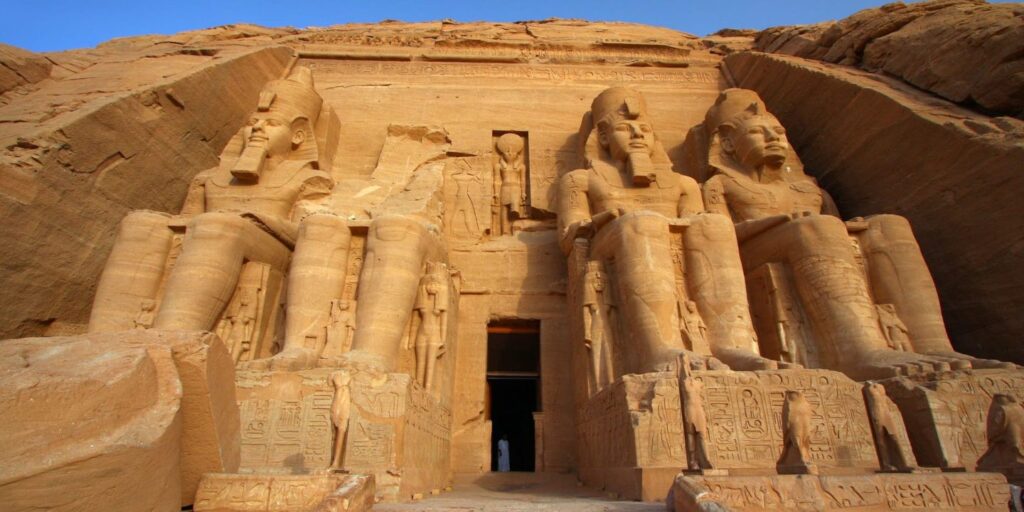Abu Simbel Temple, carved during the reign of Ramses II in ancient Egypt, remains one of the most astonishing feats of ancient engineering. Located in southern Egypt near the border of Nubia, the temple complex includes two rock temples—one dedicated to Ramses II himself and the other to his queen, Nefertari. The great temple is renowned for its monumental façade and astronomical alignment, symbolizing divine power and architectural mastery.
The Scale of the Structure
The façade of Ramses II’s temple stands at 105 feet (32 meters) high and spans 125 feet (38 meters) across. At the front, four colossal statues of Ramses II, each standing over 20 meters tall, dominate the rock face. These statues are nearly 15 times the height of an average man. They depict the pharaoh in a seated position, gazing east toward the sunrise.
Smaller statues of his family—his mother Tuya, his queen Nefertari, and his children—are placed beside his feet, reinforcing the divine hierarchy of the royal family. Above the entrance, 22 sacred baboons are carved in a row. Ancient Egyptians believed these baboons welcomed the rising sun each morning with their cries.
Engineering Genius
The temple was hewn directly into the sandstone cliff and took about 20 years to complete. Using copper and bronze tools, artisans carved detailed inscriptions, hieroglyphics, and sculptures. The alignment of the temple was carefully calculated so that, on two days of the year—believed to be Ramses II’s birthday and coronation day—sunlight would penetrate the sanctuary and illuminate statues of the gods and the pharaoh seated inside.
This alignment is a marvel of astronomical knowledge and planning from over 3,000 years ago.
Interior Decorations and Artistic Features
Inside the temple, long corridors lead to the sanctuary. Walls are covered with vibrant carvings that depict military victories, including the famous Battle of Kadesh. The inner sanctum contains four seated figures: Ra-Horakhty, Amun, Ptah, and Ramses II deified.
Relocation of the Temples
In the 1960s, the construction of the Aswan High Dam posed a serious threat to the temple due to rising waters of Lake Nasser. An international effort led by UNESCO successfully relocated the temples to a higher elevation. Over 1,000 blocks, each weighing several tons, were carefully moved and reassembled to preserve this ancient wonder. Today, this engineering feat is considered one of the greatest archaeological rescue operations ever conducted.
Cultural and World Heritage Significance
In 1979, the Abu Simbel temples were declared a UNESCO World Heritage Site. The temples attract thousands of visitors annually and remain an enduring symbol of ancient Egyptian culture, architectural brilliance, and the importance of cultural preservation.
🔗 Further Reading
For more detailed information, you can visit the official site of UNESCO’s Science and Technology Club (باشگاه علم و فناوری یونسکو) and explore more heritage and educational content.
+ Edited by Chat GPT

